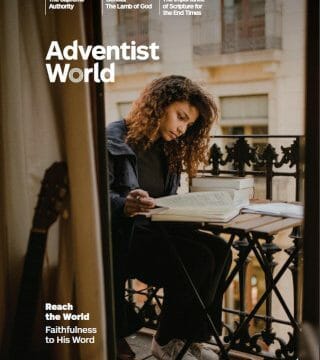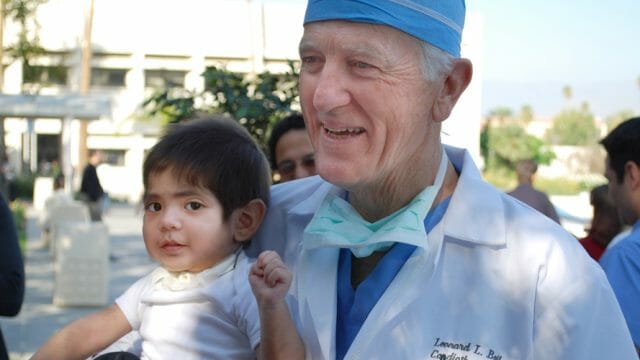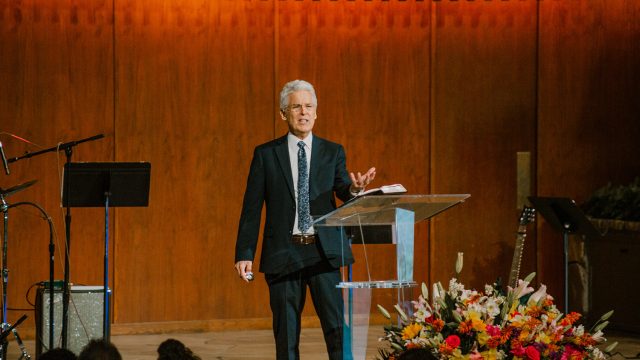What I learned about mission while serving in Brazil’s Amazon rainforest.

Our journey began at 5:30 a.m. With a group of professionals and more than 20 students from Brazil Adventist University (UNASP), Engenheiro Coelho campus in São Paulo, Brazil, we left for the Brazilian Amazon for a 10-day mission trip at Massauari Adventist Technical School (ETAM) in the Amazon jungle.
After flying for a few hours, we arrived at the Northwest Missions Institute, located in Manaus, which is responsible for carrying out missions in the region. There, I boarded the boat that would be my temporary home. We would sleep in the boat also, each in our hammock, something new and exciting for me.
We sailed for more than 24 hours until we reached the riverside community of Nova Jerusalem. We hadn’t even docked when the ETAM children approached in the company of some of their teachers to welcome us. Seeing their huge smile and how the students jumped for joy, I understood the magnitude and importance of the work we would embark on in the following days. At that moment, I could only ask, “God, help me to make a difference here.”
We visited the school and heard the story of how the first missionaries arrived and stories behind the construction of each of the rooms, among other testimonies and accounts that can only be described as miracles. Because they are so far from large urban centers, riverside communities such as Nova Jerusalem do not have access to basic services, including education. The technical school, a project of the Adventist Development and Relief Agency (ADRA) in Brazil, is supported with donations and teams of volunteers. The school exists to meet the local needs for education.
The next day, we got involved with the activities in the local church, conducting various parts of the morning service, from praise moments to the children’s story. In the afternoon, we met members of the community, who welcomed us with great affection, and together we participated in a special program.
Teamwork
During the week, we worked hard. Divided into groups, we began to paint the school rooms and two houses. One group was responsible for building a fence around the place where people in the community prepare flour, which is their main food item. Five water access points were also installed in the school’s central courtyard.
I was impressed by the volunteers’ attitude. Regardless of the heat, they kept a smile on their faces and offered to help. Always excited and focused on doing a job well done, they also tried to finish as soon as possible in the afternoon to play with the children and jump into the river.
In addition to our renovation activities, volunteers offered several workshops and Brazilian Sign Language (Libras) classes. The goal was to motivate students to keep studying and pursue a career.
Daily, volunteers presented basic principles in their areas of study, such as engineering, architecture, advertising, and veterinary medicine. In my case, I described a little about the work of a journalist.
Our explanations had to be didactic so that they understood the importance of these professions and how they can make a difference in society. After a brief theoretical part in the classroom, I and two other communication students walked around the surroundings with elementary and middle school students to record, through painting, what they saw and felt. We wanted them to learn that there are many ways to communicate.
It was gratifying and moving to see the result of the challenge. Each drawing was made by the children with commitment, creativity, and affection. The memories are forever recorded in my mind and heart.
With elementary school students, we also conducted interviews on the celebration of the school’s anniversary. Some were shy, but they accepted the challenge and interviewed people and, even without much knowledge, became camera operators for a while.
On the last day, we finished working on the rooms and participated in a special program to celebrate ETAM’s anniversary. My heart was moved as I heard those children sing.
The rain was part of our farewell, masking our tears and feelings of not wanting to return home. I walked one last time along the paths of the school, observing our finished work, full of gratitude for having been able to add my small grain of sand to a school that transforms the lives of many children from various communities across the region.
A Transformative Experience
Prior to this mission, I felt unable and unprepared to serve outside of my comfort zone. I thought about questions such as, “I will participate in a missionary project after finishing college”; “I still have a lot of time”; “it is not my area of work.” But this experience has taught me that everyone, regardless of their age or academic, professional, or economic status, can serve.
During this short time in the mission field, I discovered skills I didn’t know I had. I learned to be of good cheer in the face of unexpected situations, to be patient, to adapt according to my needs, and to trust my work more. It inspired me to keep preparing to do so much more. However, my preparation time should not be used as an excuse to do nothing.
The mission that God entrusted to us in Mark 16:15 remains the same: “Go and preach the gospel in all the world.” And if you accept this call, believe me, you will be transformed, and your life will never be the same.
I don’t know if those children will remember me in a few months, or if the rooms we renovated will continue to be beautiful over the years. But everything I experienced, although it lasted a few days, marked me deeply. In every hug I received, every laugh on the boat, every moment shared, I felt God’s love.
It’s never too late to serve. Allow yourself to be used by Him.
The original version of this story was posted on the South American Division Portuguese-language news site. Cristina Levano is a journalism student and currently participates in the internship program of the communication office in the South American Division headquarters.











